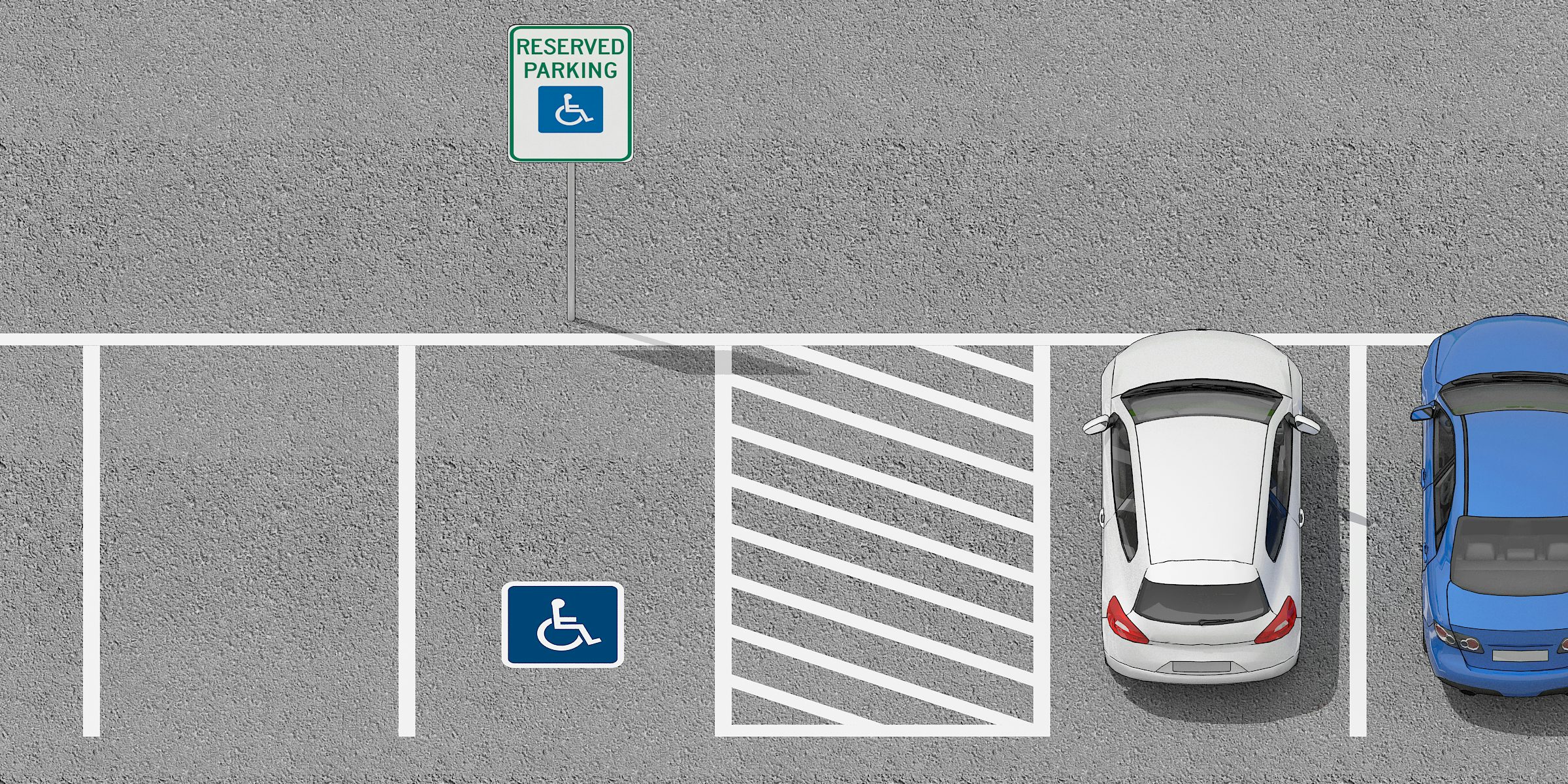
Parking rules stop vehicles from parking in dangerous or inconvenient places. You MUST NOT leave your vehicle or trailer in a dangerous position or where it causes any unnecessary obstruction of the road.
Always follow and obey all parking signs and line markings. If there are no parking signs or line markings telling you how to park, you should parallel park to the left side of the road in the direction of travel.
Leaving a car unattended
You MUST NOT leave a parked vehicle unattended with the engine running or leave a vehicle engine running unnecessarily while that vehicle is stationary on a public road.
Leaving a child alone
It’s an offence to leave a child alone if it places them at risk. Use your judgement on an appropriate age that the child can be left alone in a car, but remember that, in a hot car, children become dehydrated quickly and might die.
Exiting the vehicle
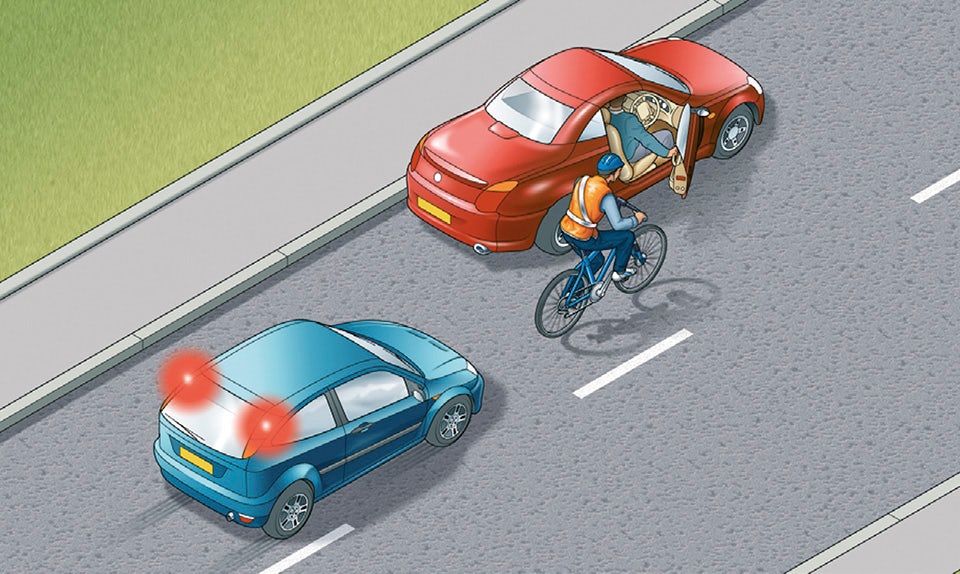
Do not cause a hazard to any person or vehicle when exiting the vehicle, opening a door or by leaving a door open. Before opening a door to leave your vehicle - check mirrors and blind spots for bicycles and other vehicles. Cyclists can get seriously hurt by an open door. Also, make sure your parking brake is on, that your engine and lights are switched off and that your vehicle is engaged in the proper gear.
- If automatic vehicle - leave gear in Park (P)
- If manual vehicle - leave gear in first gear if parked downhill and reverse if parked uphill
Parking on a hill
Parking on a hill must be done in a way which prevents your vehicle from rolling into traffic in case of a brake failure. Always set your parking brake, and:
- If parking uphill, turn your steering wheel away from the curb
- If parking downhill, turn your steering wheel toward the curb
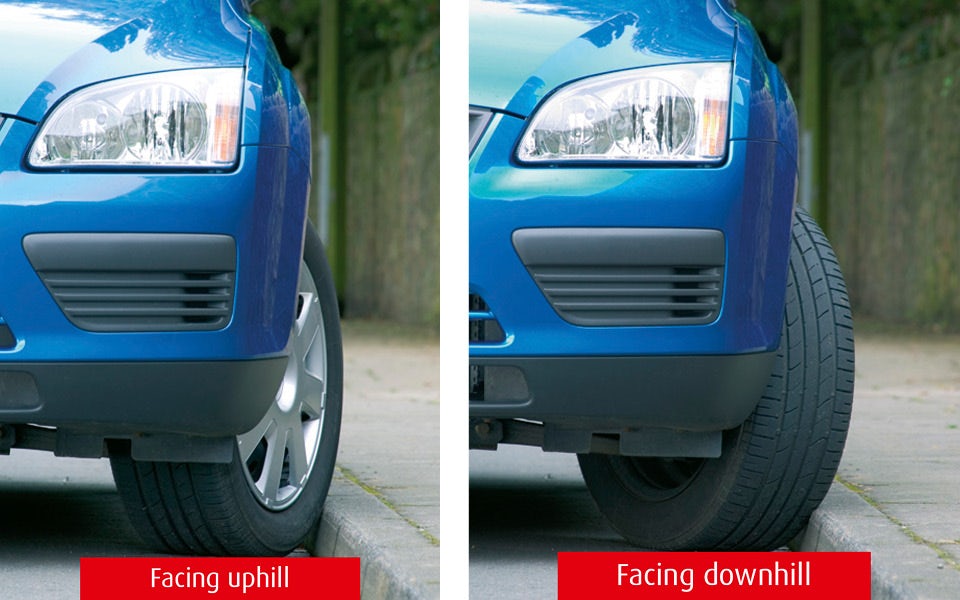
If there is no curb, or the curb is not high enough to stop your vehicle, turn the wheels so your vehicle will roll away from traffic if it starts to move.
Pulling out from a stationary or parked position
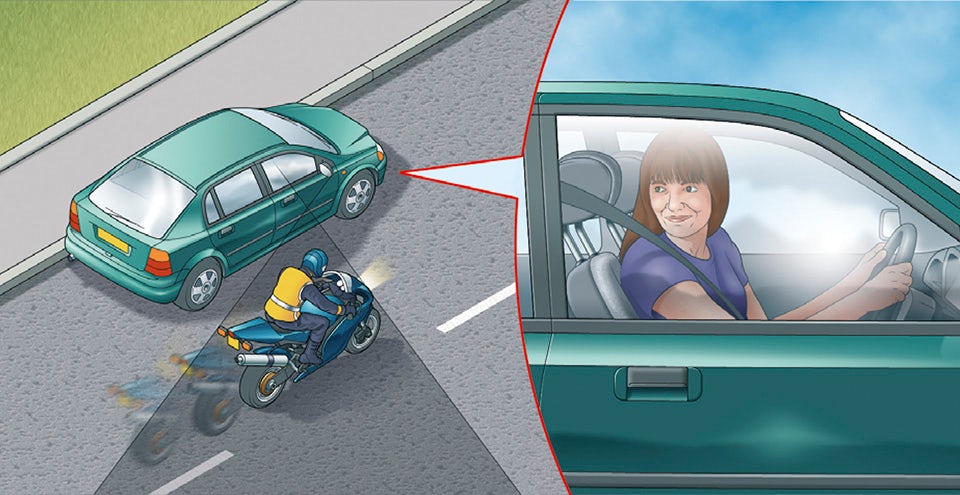
Before moving off you should
- use all mirrors to check the road is clear
- look round to check the blind spots (the areas you are unable to see in the mirrors)
- signal if necessary before moving out
- look round for a final check.
Move off only when it is safe to do so.
Parallel parking
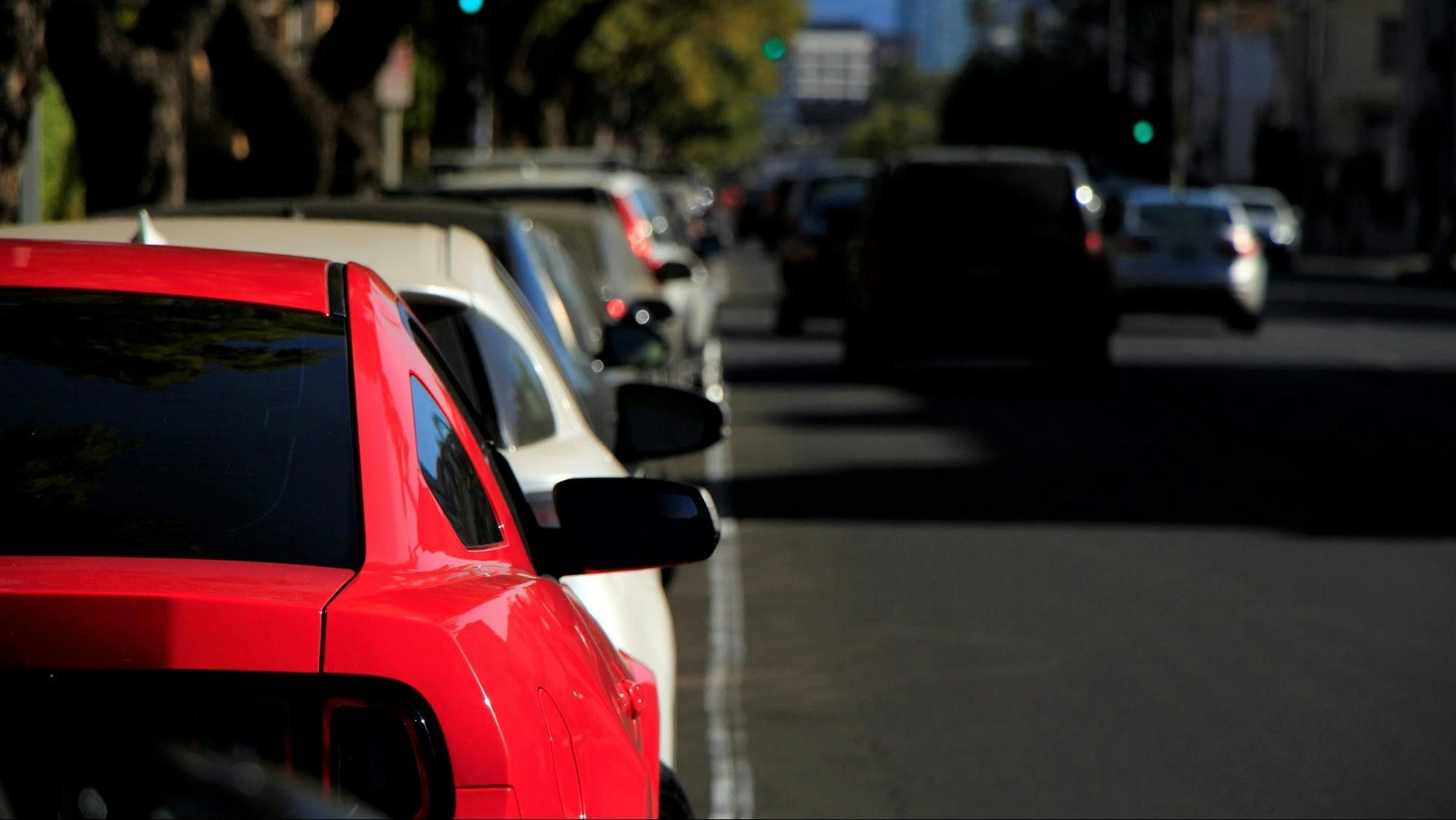
Parallel parking is the usual way to park unless indicated otherwise. Park in the same direction as traffic and as close to the kerb as possible. If there are parking bays, keep your vehicle within the bay.
How to reverse parallel park
There are many ways to reverse parallel park. Here is one way that works well:
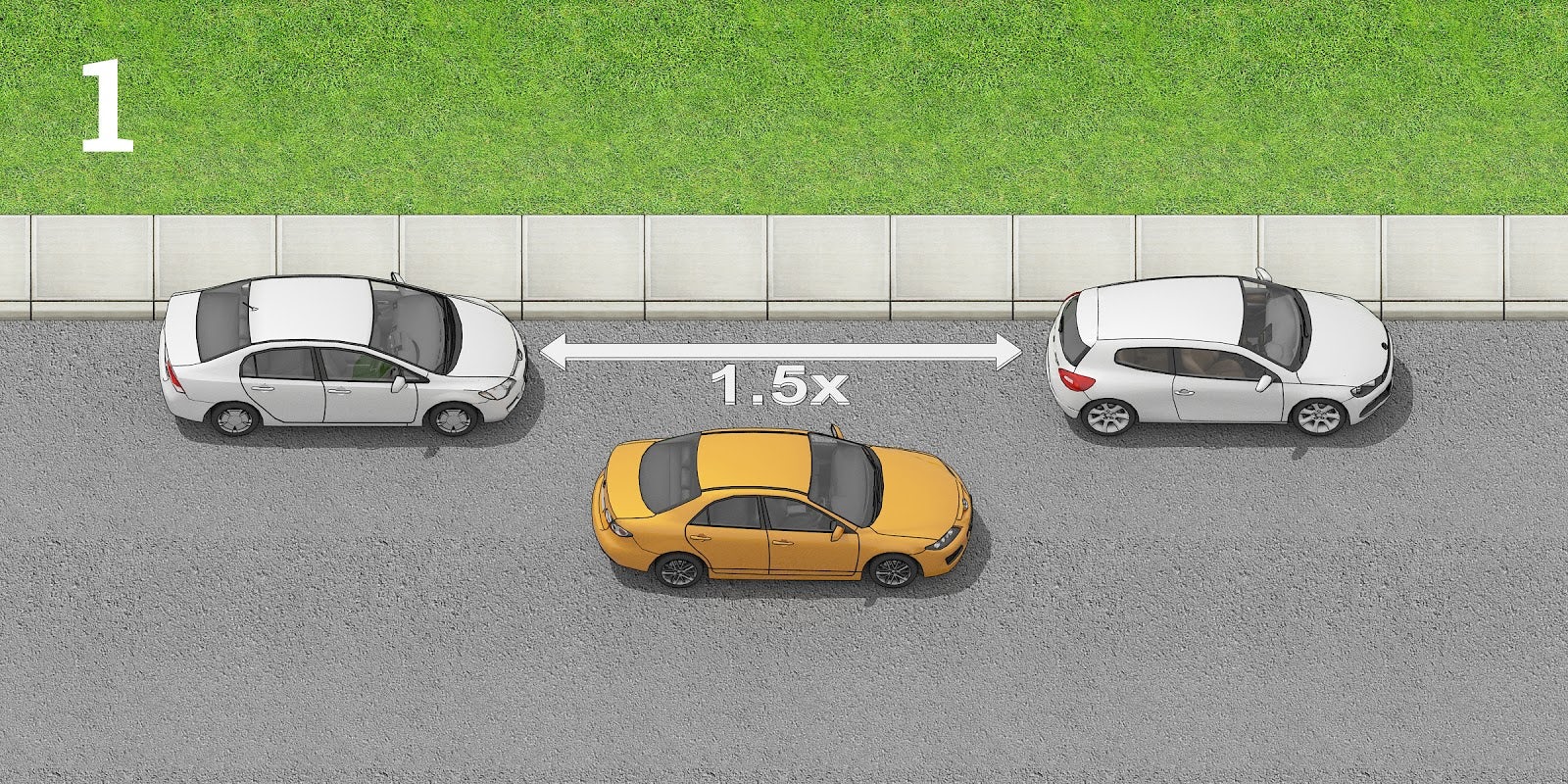
1. Find a large enough gap. It should be at least 1.5 times the length of your car.
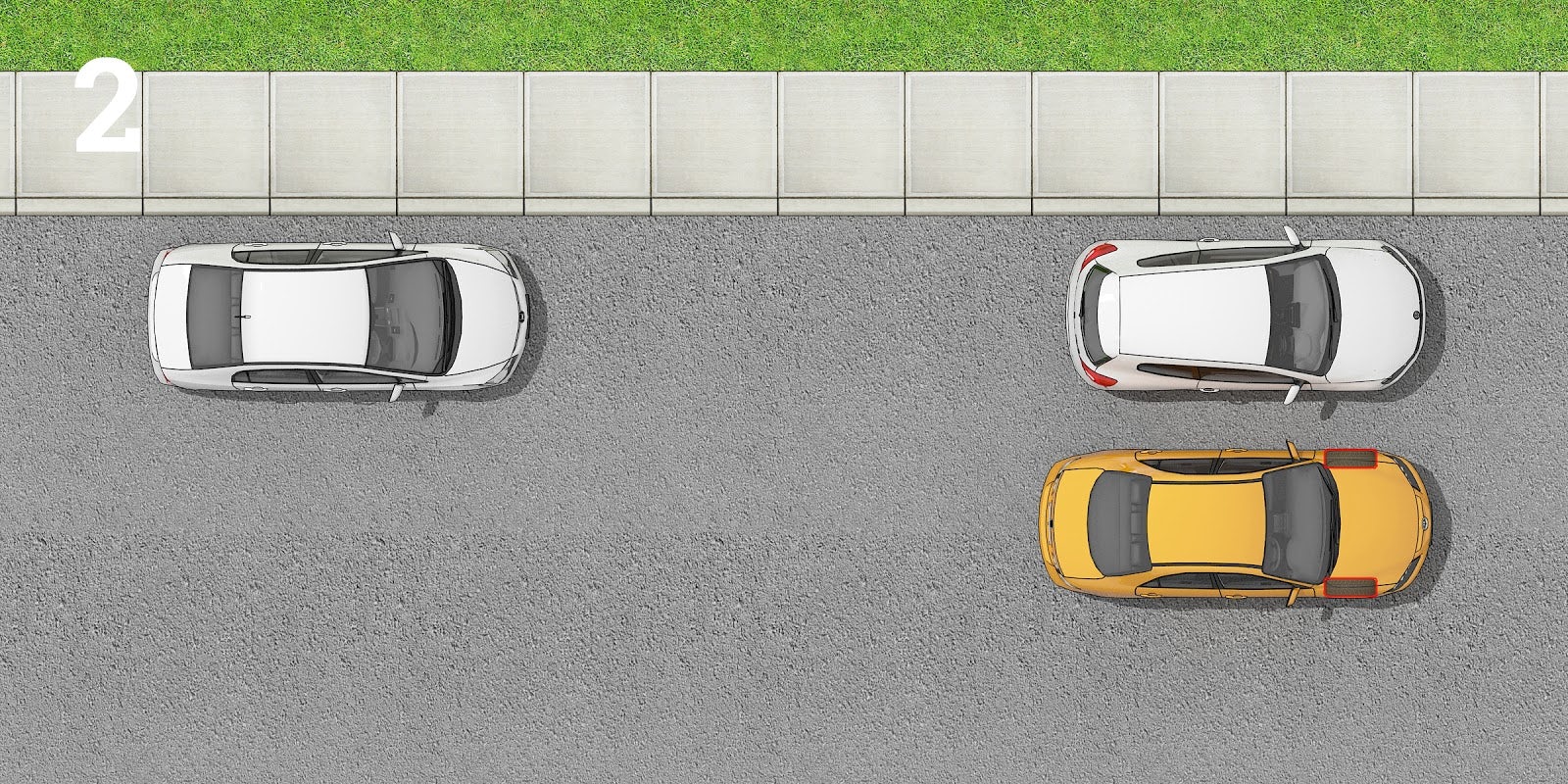
2. Place your car alongside (parallel to) the car that you intend to park behind. Align your left passenger side mirror with the driver side mirror of the car next to you. You should be about 1m from the side of the parked car.
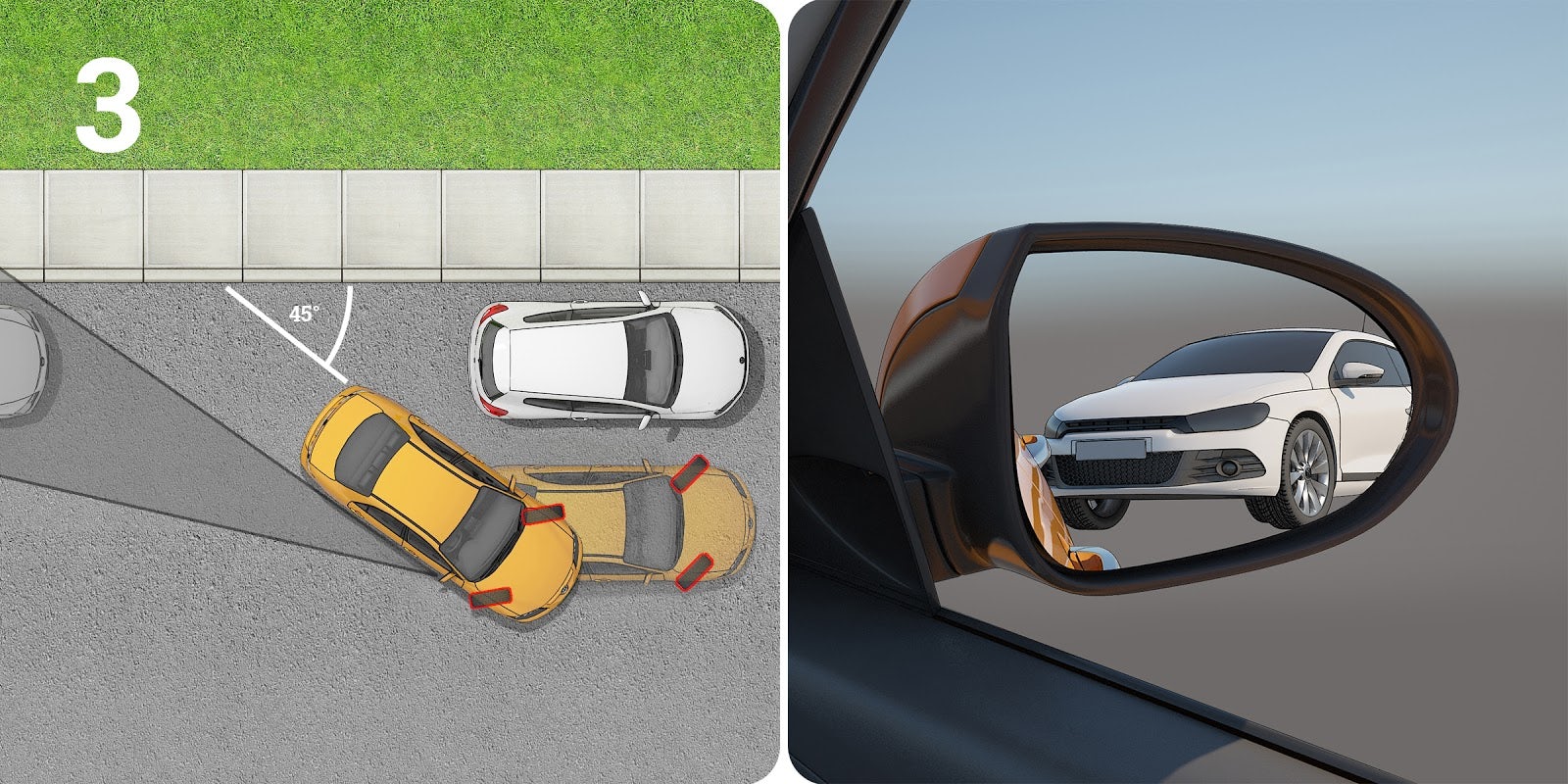
3. Turn the wheels fully to the left and reverse with care. Stop once you can see the car behind you in your right side mirror. You should see the full front of the car.
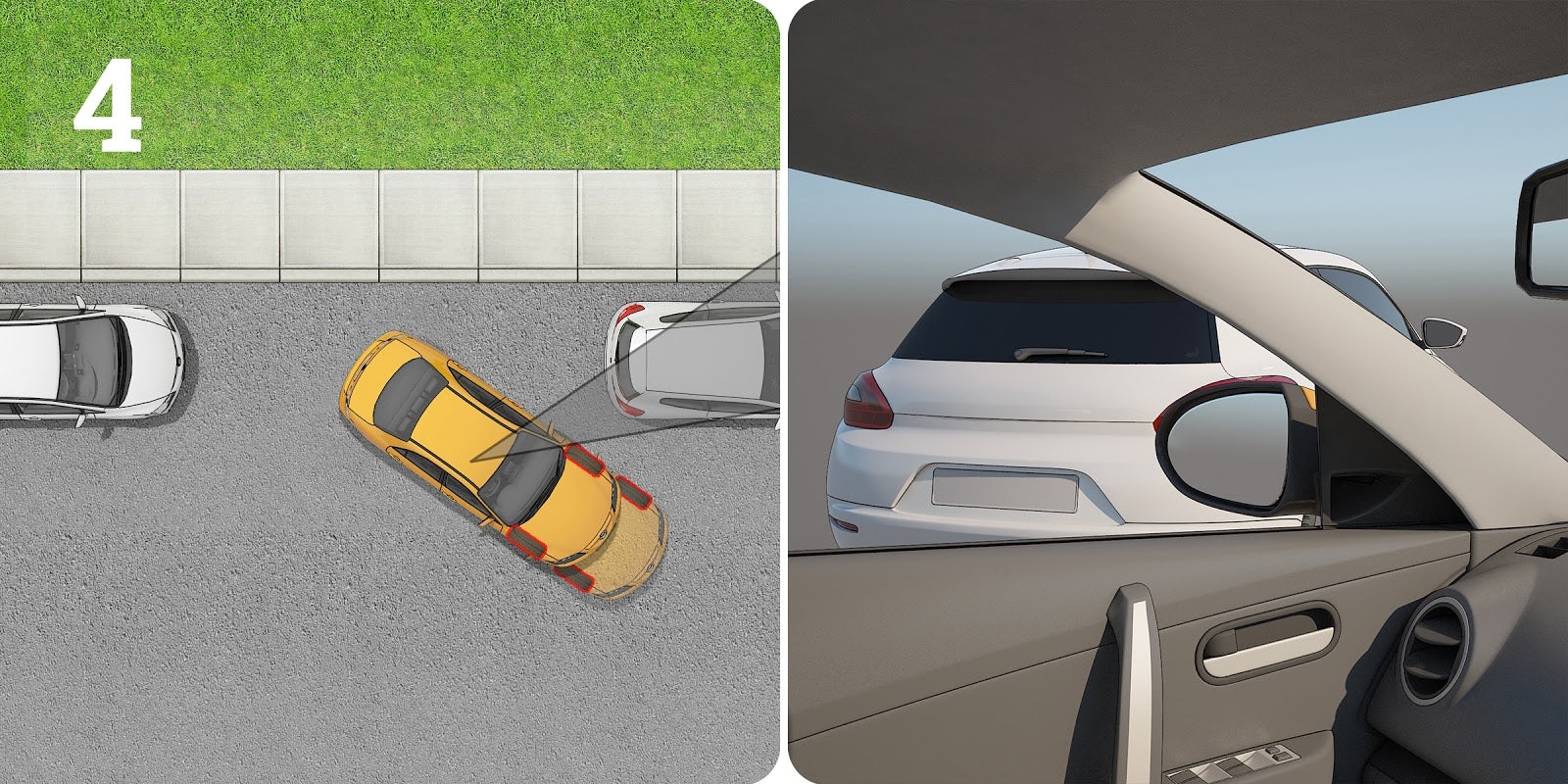
4. Turn the wheels straight and reverse until your left side mirror covers the taillight of the vehicle in front.
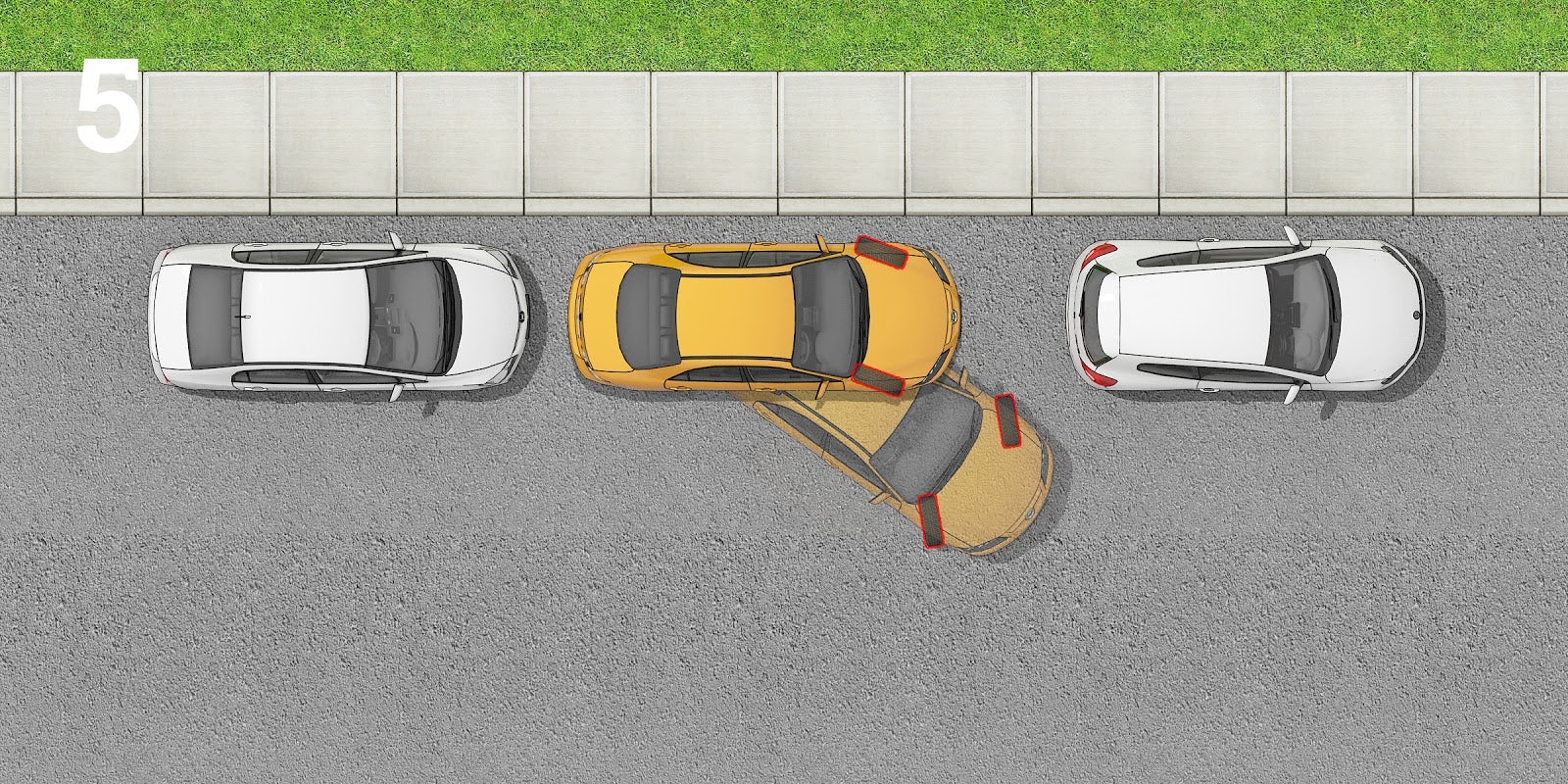
5. Turn your wheels fully to the right and reverse carefully until you’re in position.
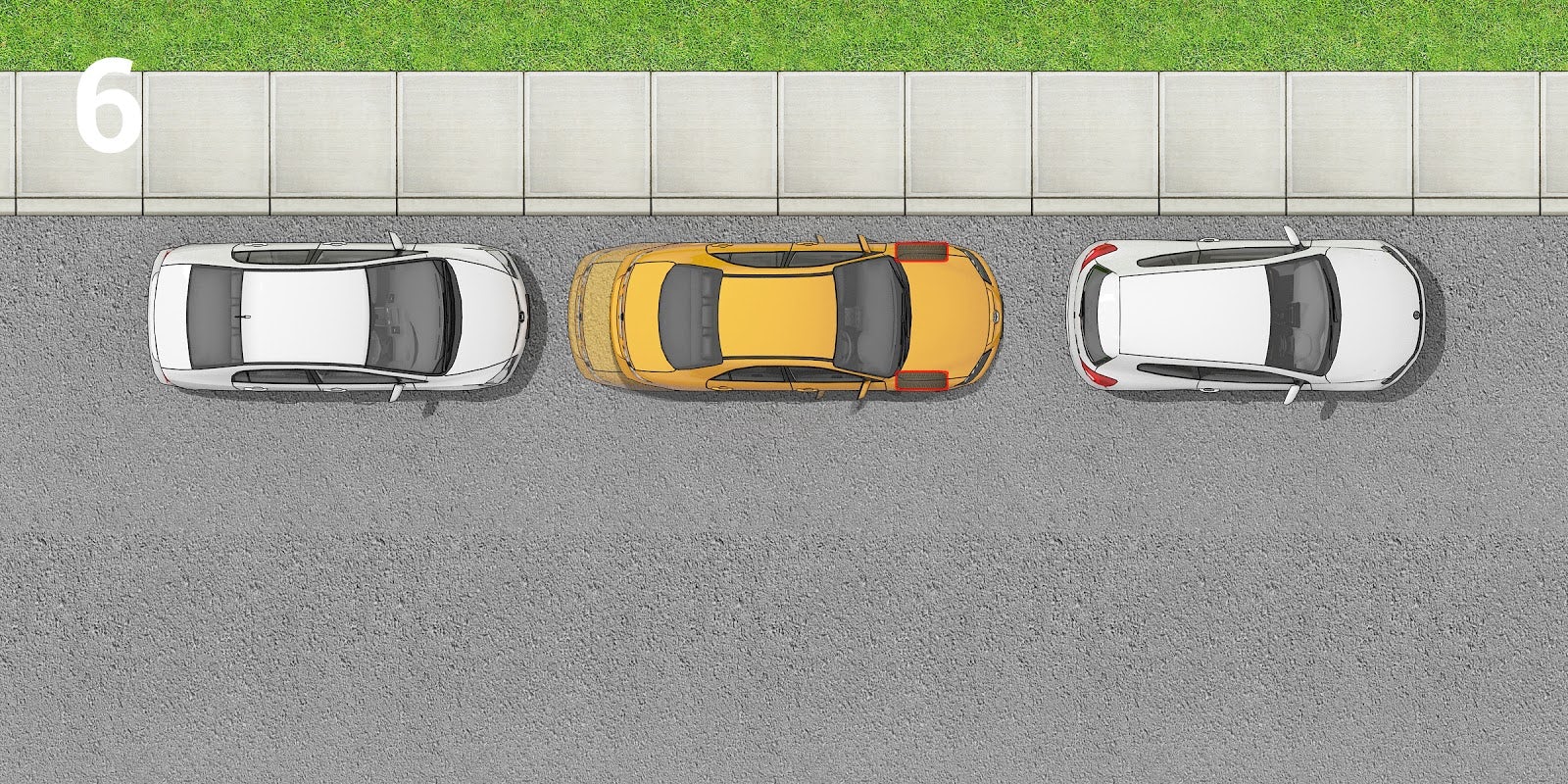
6. Straighten your wheels and if necessary inch forward to the correct position.
Reversing
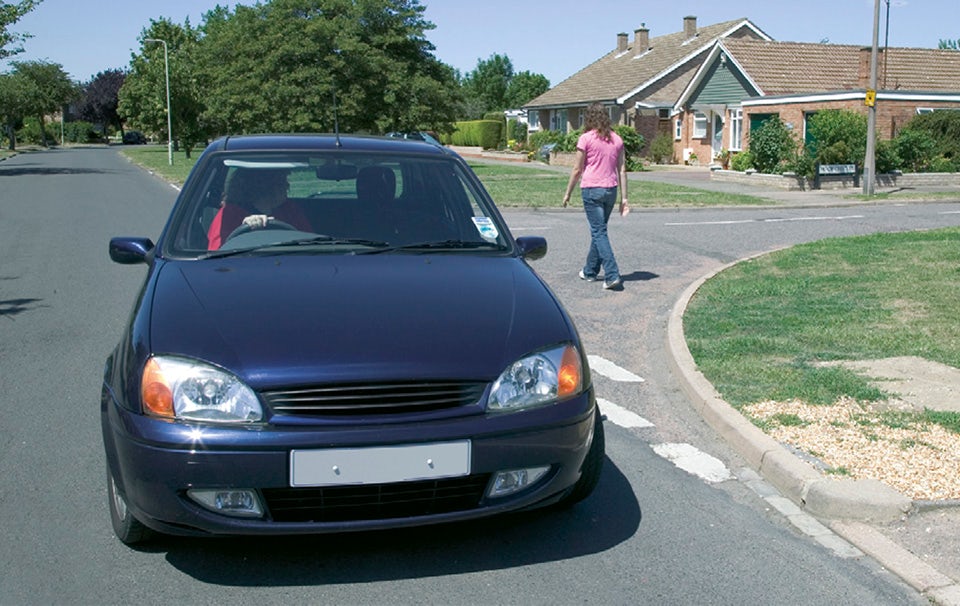
Only reverse when you can perform the manoeuvre safely and only for a reasonable distance (e.g. reversing out of your driveway). Look in the direction that you’re reversing and check the mirrors continuously. Be extra careful when reversing near intersections or when your view is limited. Avoid reversing from a side road into a main road.
When reversing, you should:
- reverse slowly
- use all your mirrors
- check the ‘blind spot’ behind you (the part of the road you cannot see easily in the mirrors)
- check there are no pedestrians (particularly children), cyclists, other road users or obstructions in the road behind you.
- mainly look through the rear window
Be aware that the front of your vehicle will swing out as you turn. Get someone to guide you if you cannot see clearly.
Parking in fog
It is especially dangerous to park on the road in fog. If it is unavoidable, leave your parking lights or sidelights on.
Stopping to load or unload

Do not load or unload where there are yellow markings on the kerb and upright signs advise restrictions are in place. This may be permitted where parking is otherwise restricted. On red routes, specially marked and signed bays indicate where and when loading and unloading is permitted.
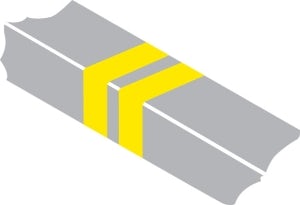
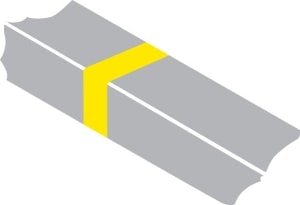
In the city of London
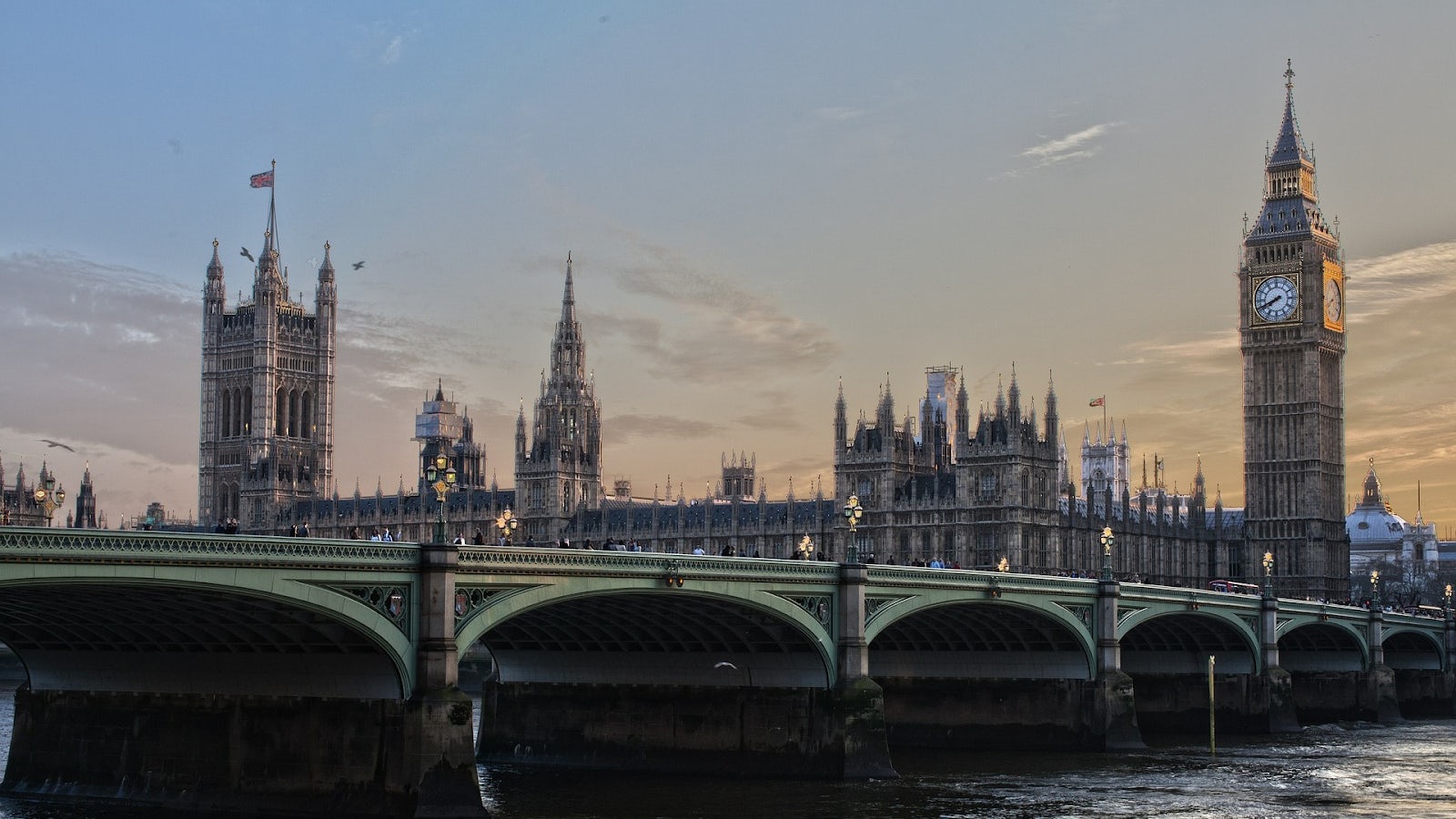
You MUST NOT park partially or wholly on the pavement in London, and should not do so elsewhere unless signs permit it. Parking on the pavement can obstruct and seriously inconvenience pedestrians, people in wheelchairs or with visual impairments and people with prams or pushchairs.
Parking at night
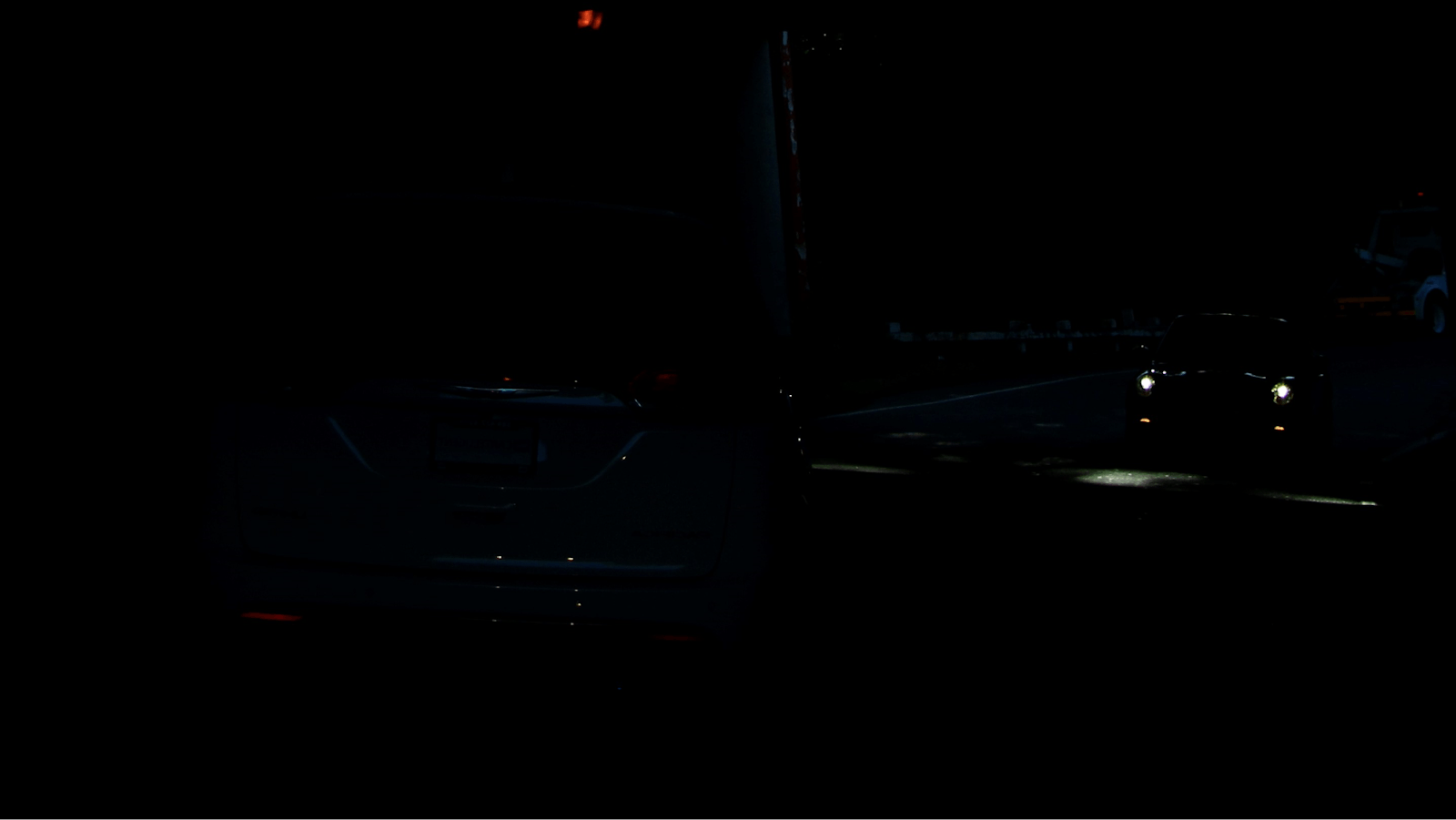
You MUST NOT park on a road at night facing against the direction of the traffic flow unless in a recognised parking space.
All vehicles MUST display parking lights when parked on a road or a lay-by on a road with a speed limit greater than 30 mph.
Passenger cars, and specified other vehicles, may be parked without lights on a road (or lay-by) with a speed limit of 30 mph or less if parked:
- at least 10 metres away from any junction, close to the kerb and facing in the direction of the traffic flow
- in a recognised parking place or lay-by.
Vehicles with projecting loads, MUST NOT be left on a road at night without lights.
Yellow lines
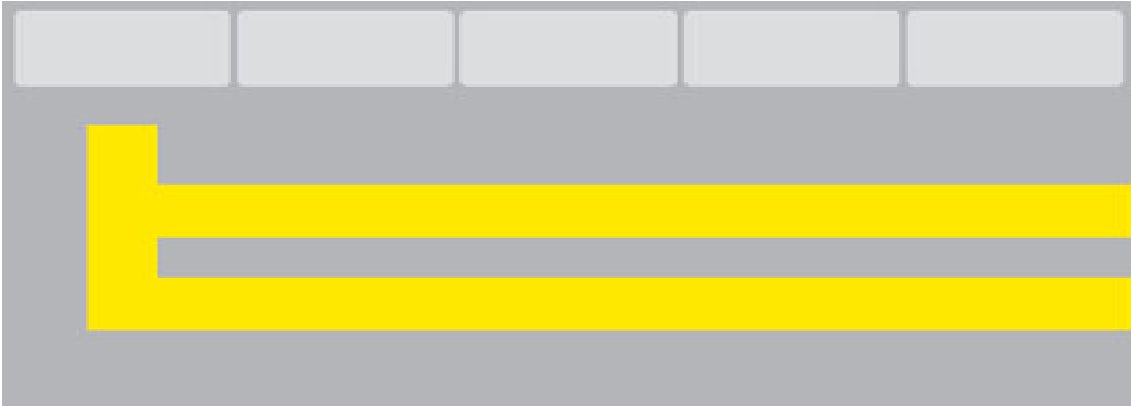
You MUST NOT wait or park on single yellow lines during the times of operation shown on nearby time plates or zone entry signs.
Double yellow lines indicate a prohibition of waiting at any time even if there are no upright signs.
Red lines
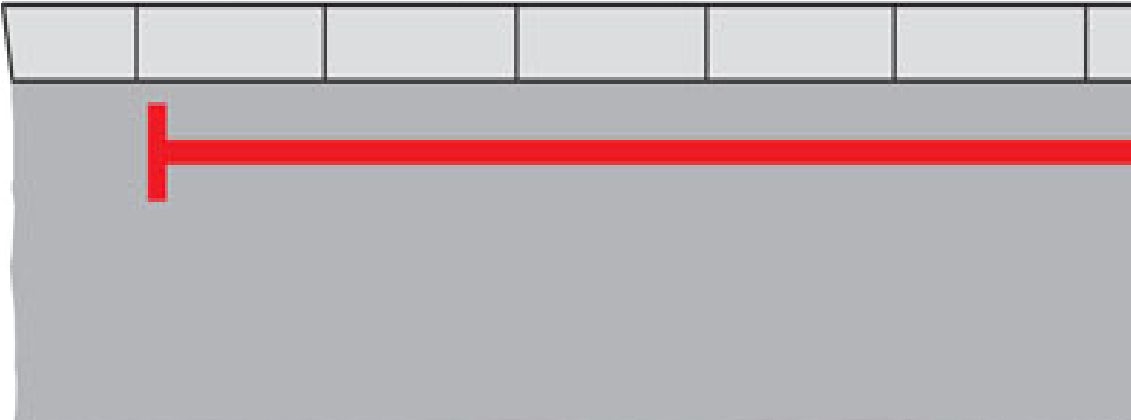
Red lines are used on some roads instead of yellow lines. In London the double and single red lines used on Red Routes indicate that stopping to park, load/unload or to board and alight from a vehicle (except for a licensed taxi or if you hold a Blue Badge) is prohibited.
- A single red line means no stopping during times shown on sign.
- Double red lines indicate no stopping at any time.
General parking and stopping rules
There are many rules and regulations drivers must obey in regards to parking. You MUST NOT stop or park on:
- parking spaces reserved for specific users, such as Blue Badge holders, residents or motorcycles, unless entitled to do so
- the carriageway or the hard shoulder of a motorway except in an emergency
- a pedestrian crossing, including the area marked by the zig-zag lines
- a clearway
- taxi bays as indicated by upright signs and markings
- an Urban Clearway within its hours of operation, except to pick up or set down passengers
- a road marked with double white lines, even when a broken white line is on your side of the road, except to pick up or set down passengers, or to load or unload goods
- a tram or cycle lane during its period of operation
- a cycle track
- school entrance marking if signs indicate a prohibition of stopping
- red lines, in the case of specially designated ‘red routes’, unless otherwise indicated by signs. Any vehicle may enter a bus lane to stop, load or unload where this is not prohibited
Furthermore, do not stop or park:
- near a school entrance
- anywhere you would prevent access for Emergency Services
- at or near a bus or tram stop or taxi rank
- on the approach to a level crossing/tramway crossing
- opposite or within 10 metres (32 feet) of a junction, except in an authorised parking space
- near the brow of a hill or hump bridge
- opposite a traffic island or (if this would cause an obstruction) another parked vehicle
- where you would force other traffic to enter a tram lane
- where the kerb has been lowered to help wheelchair users and powered mobility vehicles
- in front of an entrance to a property
- on a bend
- where you would obstruct cyclists’ use of cycle facilities
except when forced to do so by stationary traffic.
